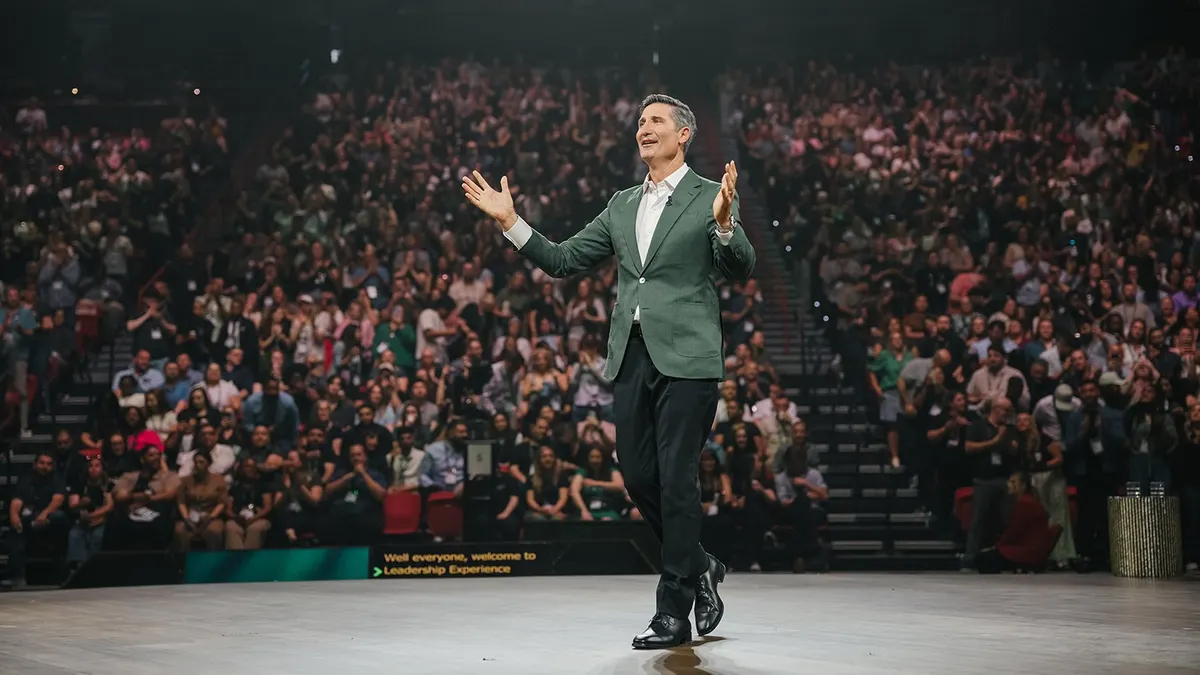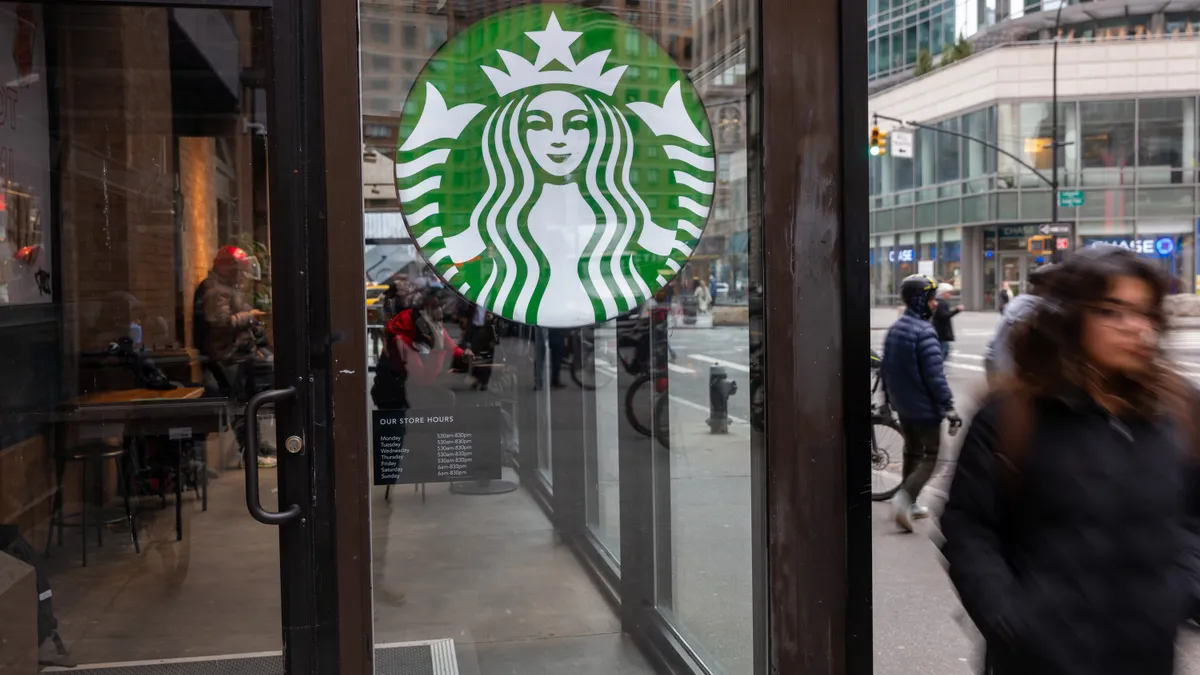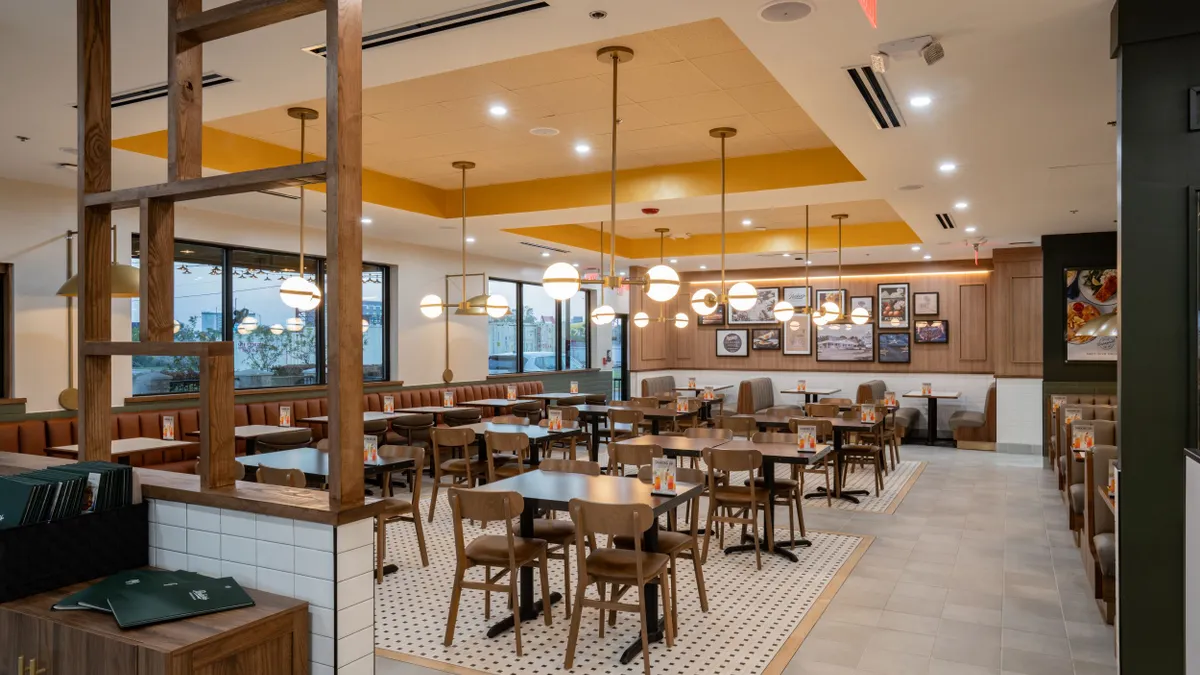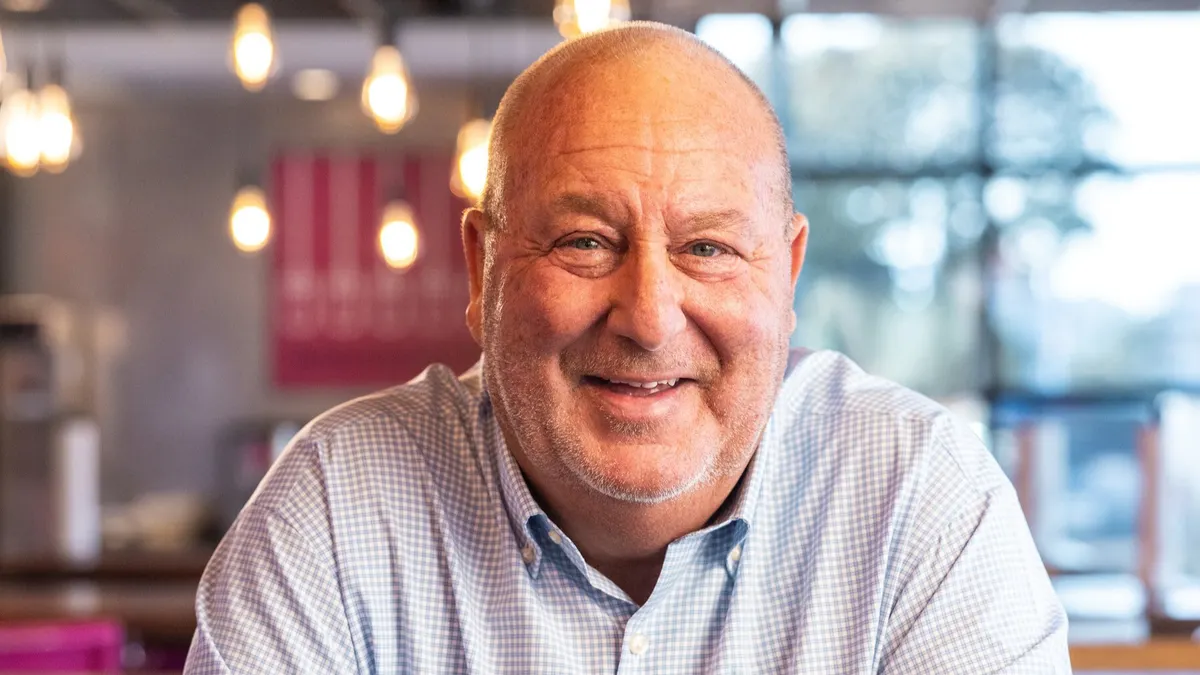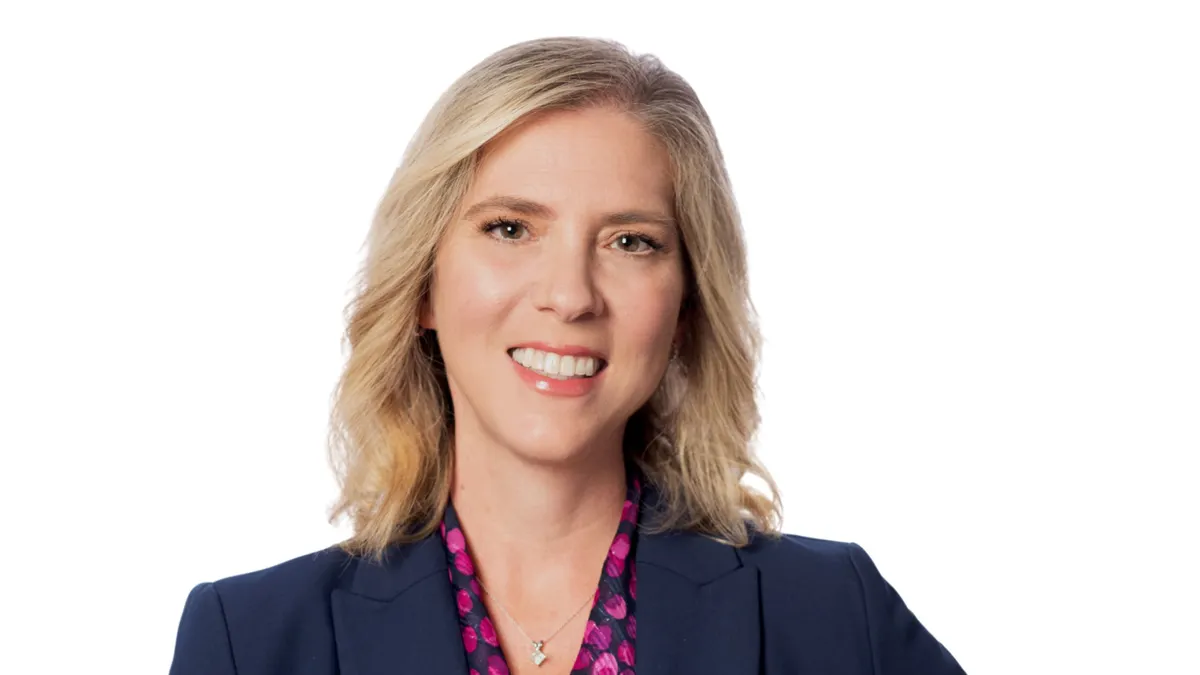When Brian Niccol joined Starbucks as CEO in September 2024, the coffee chain was flailing against steep declines in traffic and sales. Niccol quickly got to work, creating a Back to Starbucks plan to entice lapsed customers back and optimize cafe operations.
This wasn’t the first time Niccol overhauled a struggling restaurant chain. Niccol honed his turnaround skills at Chipotle in 2018, where he was brought on after several high-profile food safety incidents that gutted traffic. Within a year at Chipotle, Niccol rolled out stores with “Chipotlane” mobile pickup lanes, which now make up about 80% of new development and pull 15% higher sales than traditional Chipotle units.
Could Niccol’s touch also turn Starbucks to gold? Maybe. A big part of a brand turnaround’s success is finding the ideal CEO, experts said. Boards should look for an executive who can develop a clear strategy to bring order to a company’s chaos, said Chad Hesters, CEO of global executive search firm Boyden.
“Turnarounds are difficult because, very typically, a CEO will take that job and have to be painting the plane while they’re flying it,” Hesters said. “That’s an incredibly stressful situation for boards, CEOs and management teams.”
Several restaurant chains, like Potbelly and Chili’s, have recently undergone successful brand transformations, with BJ’s Restaurants seeing early successes with its own strategic shifts. Many more, like Red Robin, Papa Johns and El Pollo Loco, are in the midst of their own strategic shifts.
No turnaround is exactly the same, but successful brand transformations share core tenants to better deliver on diner, and in some cases shareholder, expectations.
Avoiding the pitfalls of bringing in an industry outsider
Some companies have brought in industry outsiders during turnarounds to offer new perspectives. But executives with little industry knowledge face steep learning curves, which can undermine transformation strategies.
Laxman Narasimhan, for example, had no restaurant experience when he became CEO at Starbucks in 2023, after working at consumer health company Reckitt Benckiser Group. He lasted about a year and a half before Starbucks replaced him with Niccol following investor dissatisfaction.
“Having to get up that learning curve while you’re in the middle of a street fight, which is what a turnaround feels like … that learning curve is too steep,” Hesters said. “That’s the reason you see a lot of those outside the industry CEOs maybe not be successful. … If you get too far afield, the curve may be too steep for success.”
Boards seeking CEOs outside of the restaurant space should look at executives in similar industries with transferable experience, Hesters said. Boards should consider complementary subsectors of the restaurant industry and other sectors that act a lot like restaurants, Hesters added.
CEOs that are successful in one context may not thrive in another. Boards of global restaurant groups should seek an executive that has experience not just in the U.S., but also internationally. If a company needs to sharpen operations, a CEO should have operational experience,experts said.
“Operations in the restaurant space are pretty unique and pretty intense,” William Blair analyst Sharon Zackfia said. “If there is a focus more on solidifying operations, it's harder to go outside of the restaurant space.”
Boards can also promote from within, given that internal candidates tend to understand the company culture, decision-making and processes. But homegrown CEO hires may not be equipped for brand transformations.
“Typically for turnarounds, I've generally seen more [companies] going outside of the organization for the external set of eyes and viewpoints,” Zackfia said. “There have definitely been founders that have come back to lead turnarounds, but in terms of a promotion from within for a turnaround, I’m drawing a blank.”
If the internal candidate has been a product of the company culture or management style that isn’t working anymore, then it could be difficult to adjust strategies during a turnaround, Hesters said.
“By a large margin, turnaround CEOs are coming from outside an organization, and it very typically comes from the board recognizing that the internal organization has some real challenges,” Hesters said.
The traits of a successful turnaround CEO
Successful CEOs typically share similar qualities no matter the industry, Hesters said. They have high emotional IQs and a low ego in leadership roles, and are open to hearing concerns about the company, Hesters said.
“They’re able to and willing to listen to what the market is saying, to what their leadership teams are saying and they’re not wedded to the concept,” Hesters said.
The CEO also has to be willing to innovate and understand that just because something worked before doesn't mean it will work now, Hesters said.
“The hallmark of any good CEO is listening,” Zackfia said. “Listening is an underrated skill just in general.”
That CEO must understand and have “absolute clarity” about the capabilities an organization needs to have in-house in order to meet its goals, Hesters said.
Many fast food companies struggle with maintaining adequate staffing levels, so a CEO in this sector would need to create a strong workforce, Hesters said.
Today’s restaurant CEOs must also respond to emerging technology, like automation and artificial intelligence, and build a team that can integrate technology quickly at an enterprise level. The restaurant space has been figuring out how to digitize everything from fleet management to orders, payments and communications with customers, Hesters said.
“You want someone in the seat who knows your consumer and it becomes a more intuitive decision-making process for them,” said Jeff Pielusko, managing director at Carl Marks Advisors.
Many companies are hiring millennials as CEOs, like Red Lobster’s CEO Damola Adamolekun, as a way to better understand younger consumers, Pielusko said. Millennial CEOs can give feedback on menus and dining rooms in a way that reflects the preferences of target consumers. Executives in this age demographic also tend to be more tech savvy and have a good sense of how a brand should present itself on a mobile app, Pielusko said.
CEOs with operational experience also tend to be more successful as they have first-hand knowledge of common restaurant problems, Pielusko said.
“You want someone who’s in communication with general managers — who’s not just looking at spreadsheets and PowerPoints presentations and reading Bloomberg — and making decisions based on talking to people and getting real-time feedback,” Pielusko said.
5 traits of a successful restaurant CEO
1. High emotional intelligence
2. Good listener
3. Good communicator
4. Operational experience in the restaurant industry or related industry
5. Willingness to learn consumer and employee needs
Determining a turnaround strategy
Company boards in dire straits have to determine the best path forward: sell the company or attempt a brand overhaul with a new CEO, Pielusko said. It can be difficult for a new chief to change consumers’ perspectives, he said. But selling doesn't necessarily save brands, either.
“Selling that brand to somebody else is not going to change the brand. Maybe they can implement some new strategies around menus, [like] shrinking the menu,” Pielusko said. But even new ownership could be fighting an uphill battle to get consumers back, he added.
Among the biggest initial challenges for a CEO facing a turnaround is figuring out what a brand’s problems are, and how best to solve them, Pielusko said.
“A new perspective can always be enlightening,” Pielusko said. “Sometimes you have the same people looking at the same information, trying to fine-tune decisions that you know [they] may be somewhat biased against, just based on the history with the brand, whereby what maybe it needs is a complete overhaul.”
CEOs should avoid “strategic flailing” by starting to make major changes on day one if the company is not in an emergency situation, since this is not the best way to gain the confidence of the board and employees, Hesters said.
“Unless it’s a situation of extreme duress or an extreme emergency, CEOs should not make any major decision in the first three to six months of their job because understanding the needs of your franchisees, customers, investors takes time to be thoughtful, intentional and engaged,” Hesters said.
The CEO needs to figure out the strengths of the organization and what needs to be improved by talking with many people within the organization during the onboarding process, Zackfia added. Three months of listening and learning is a reasonable amount of time before embarking on significant changes, Zackfia said.
The root of most back-to-basics plans are the same: a restaurant needs to refocus on their customers, and determine how best to cater to their needs, Hesters said. Niccol implemented a Back to Starbucks plan shortly after arriving at the chain, while Todd Pennegor is focusing on making better pizzas at Papa Johns.

Potbelly underwent a turnaround starting five years ago, when Bob Wright became CEO. The leadership team improved the business’ fundamentals, boosting profits and revenue per unit above the levels seen before Wright’s tenure, Zackfia said.
“They build a franchise pipeline for a business that’s historically been company owned,” Zackfia said. “Of the management teams that have been around awhile, [they] have executed on that turnaround.”
But it doesn’t always take five years to right the ship. BJ’s Restaurants brought on Lyle Tick as chief concept officer last year, and promoted him to CEO in June. Within a couple of months Tick deployed tweaks to the menu, tools for employees and other operational changes that have already yielded positive results, Zackfia said.
A brand overhaul can range from streamlining a menu to allow for menu innovation that is more relevant to guests to running time and motion studies to figure out if the layout in the back of house is conducive to the business, she said.
CEOs will typically need to look at the four pillars of operations: customer satisfaction, speed of service, order accuracy and portion accuracy, Zackfia said.
“If comps are under pressure or same-store sales are under pressure or new units aren’t performing as expected, you have to go back to those four pillars … to try to diagnose what’s going wrong,” Zackfia said.
Turnarounds that involve remodels also can take longer, if the changes are more than a cosmetic redesign. Most restaurants will need to be touched up every 10 years to maintain fresh-feeling decor, she said.
Once a strategy is chosen, a CEO’s next big challenge is tempering expectations, Pielusko said. While some initiatives, like investing in computerized staffing or redoing kitchen layouts, can be achieved fairly quickly, an overhaul takes time. CEOs should be clear in their perspectives, timeline and expectations so that nobody is surprised.
“Developing a strategy that works is one thing, having the support of your management team and your investors in another challenge,” Pielusko said. “People want high returns in a short amount of time.”
Restructuring management to support a turnaround
The turnaround CEO will look to update corporate structure and management alongside operations, experts said.
“Many times CEOs have to come in and change the culture, their management team and the management culture of the company,” Hesters said. Sometimes, this entails rebuilding an executive team to be more agile and breaking down silos within the company structure.
Teams that can work cross functionally with departments like finance, marketing and supply chain mean a company can make faster decisions, which is critical in the restaurant and consumer goods space, Hesters said.
Turnaround CEOs typically create their own senior management teams. One of the most common roles to shift under a new CEO is the CFO position, followed by the COO, Hesters said. Niccol hired Cathy Smith, former Nordstrom’s chief financial officer and treasurer, as CFO earlier this year and in June promoted Mike Grams, who had joined the chain in February, to chief operating officer, a position that was previously eliminated in 2022.
Boards typically give the new CEO autonomy to hire who they wish, but the CEO will talk the board through the personnel changes and the reasons why they want to bring in new executives, he added.
“Many CEOs stepping into a turnaround situation choose to bring in a new CFO as a key executive partner due to the critical and time-sensitive nature of the situation,” Hesters said.
The CFO could be a former colleague, but will often be someone with a background in restructuring that can provide competent perspective and financial leadership skills to improve a company facing cash-flow problems and time sensitive conditions.
A chief operating officer will typically come in after a strategic initiative has been set, Hesters said. The COO generally executes various aspects of the strategy that require a specific skillset depending on what the situation is, Hesters said.
“Ensuring the executive selected has the right competency fit can only really be accomplished once the big picture has been decided,” Hesters said.
With a strategy and management team aligned, a turnaround CEO is typically set up for success. While Niccol’s strategy has yet to lead to growth in same-store sales, declines have moderated and the chain seems to have built a strong foundation.
“If a CEO does a good job in a turnaround, they might work themselves out of a job,” Hesters said. “Because if they're really good [at] turnarounds, they may not be optimized as a leader in a different growth environment.”
Correction: A previous version of this article misidentified Jeff Pielusko, managing director at Carl Marks Advisors. The article has been updated with the correct name.


